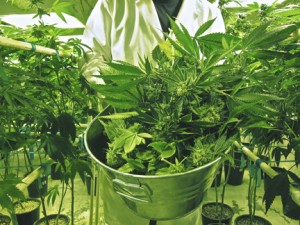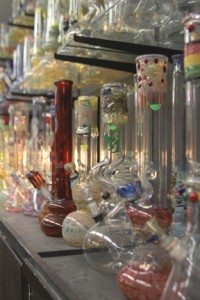Roots of 420 are locally grown

By Frank Ladra
The Guardsman
The number 420 might seem to some like an ordinary juxtaposition of three random digits, but when it is pronounced “four-twenty” it takes on an entirely different meaning.
Nobody can be entirely certain where it originated, but the term has drifted into mainstream language and is celebrated globally each year on April 20 by the burgeoning marijuana culture.

to 1971, when a group of five San Rafael, Calif. high school students went searching for an allegedly abandoned marijuana crop somewhere in the forest of Point Reyes, Calif.
In reference to the their favorite after-school hang-out spot at a wall, the group called themselves “The Waldos”.
Before setting out on their adventure, the Waldos agreed to meet at the statue of Louis Pasteur on the grounds of San Rafael High School at precisely 4:20 p.m. Their plan was coined “4:20 Louis” but after several failed attempts to find the mysterious crop, it was shortened to 4:20 and was continually used by the group thereafter to refer to marijuana use in general.
It is still questionable how five ordinary kids managed to spread the now iconic term, making it a well-known phrase identifiable to the international cannabis subculture.
The music industry is one of the easiest places to find 420 references. As fortune would have it, the collapse of San Francisco’s hippie utopia in the late ‘60s set the stage.
As speed freaks, thugs and con artists took over the Haight, the Grateful Dead picked up and moved to the Marin County, Calif., hills – just blocks from San Rafael High School.
It just so happens that one of the Waldos’ fathers took care of real estate for the Grateful Dead, and one of the Waldos’ brothers managed one of the Dead’s opening bands. Regularly hanging out backstage, the Waldos befriended (and often smoked pot with) Dead bassist Phil Lesh, who adopted the term into his own vocabulary, thus taking it on tours all over the United States.
Other musical references to 420 can be heard throughout the industry. The chorus of Bob Dylan’s “Rainy Day Women #12 & 35” proudly boasts “Everybody must get stoned,” but those with better math skills would notice that 12 multiplied by 35 equals 420.
“Where the grass is green” from “Paradise City” by Guns and Roses is sung at four minutes and 20 seconds into the song. Crosby, Stills and Nash even have a song simply called “4+20”.
Some suggest 420 used to be the police code for marijuana smoking in progress or that 4:20 was when police officers change shifts, making it easier to smoke pot unnoticed. Four-twenty is also the time that students, who are known to occasionally enjoy cannabis, are released from detention.
Others believed 4:20 was the perfect time to take a dose of LSD for it to peak by the time The Grateful Dead went on stage. And though it is often thought that the Swiss scientist Albert Hofmann discovered LSD on April 20, 1943 at 4:20 p.m., it was actually the day before.
Whatever the case may be, April 20 has long been an unofficial day of celebration for marijuana fans, an occasion for campus smoke-outs, concerts and cannabis festivals.
In Golden Gate Park, thousands gather annually at Hippie Hill to celebrate their mutual appreciation of the herb that has been such a topic of interest in recent elections. Other gatherings will be happening too, but many are spontaneous and unadvertised for privacy and legal reasons.
Email:
fladra@theguardsman.com

Comments are closed.